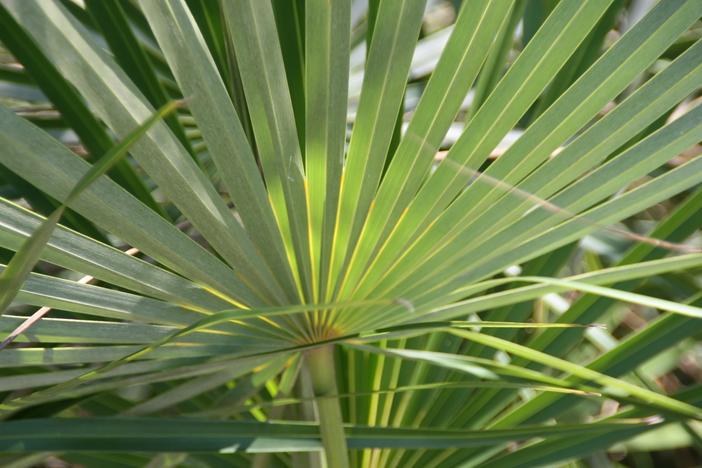Florida Silver Palm
(Coccothrinax argentata)
Florida Silver Palm (Coccothrinax argentata)
/
/

David J. Stang
CC BY-SA 4.0
Image By:
David J. Stang
Recorded By:
Copyright:
CC BY-SA 4.0
Copyright Notice:
Photo by: David J. Stang | License Type: CC BY-SA 4.0 | License URL: https://creativecommons.org/licenses/by-sa/4.0 | Uploader: David Stang | Publisher: Wikipedia Commons
































Estimated Native Range
Summary
Coccothrinax argentata, commonly known as Florida Silver Palm, is an evergreen palm that is native to coastal scrublands, rocky pinelands, and sandy soils of South Florida, the Bahamas, Turks and Caicos Islands, Southeastern Mexico, and parts of Colombia. It typically grows to a height of 2–6 meters (6.5–20 feet), with a slow growth rate, as evidenced by measurements at Fairchild Tropical Botanic Garden indicating an average annual increase of 12 centimeters (4.7 inches). This palm is characterized by its fan-shaped leaves that are dark blue-green on the upper surface and strikingly silver-colored beneath, creating a shimmering effect. The white flowers are small and borne on light orange inflorescences, while the fruits are globose, about half an inch in diameter, turning from green to purple or black when ripe.
The Florida Silver Palm is valued for its ornamental silver foliage and its ability to thrive in coastal conditions, making it a popular choice for tropical and subtropical landscapes. It is used in urban planting, as a specimen tree, and in groupings for a dramatic effect. This palm prefers full sun to part shade and requires medium amounts of water, along with well-drained soils. It is relatively low-maintenance but may be susceptible to lethal yellowing disease. Despite its slow growth, it is a resilient plant once established and can tolerate drought and salt spray, making it suitable for seaside gardens.CC BY-SA 4.0
The Florida Silver Palm is valued for its ornamental silver foliage and its ability to thrive in coastal conditions, making it a popular choice for tropical and subtropical landscapes. It is used in urban planting, as a specimen tree, and in groupings for a dramatic effect. This palm prefers full sun to part shade and requires medium amounts of water, along with well-drained soils. It is relatively low-maintenance but may be susceptible to lethal yellowing disease. Despite its slow growth, it is a resilient plant once established and can tolerate drought and salt spray, making it suitable for seaside gardens.CC BY-SA 4.0
Plant Description
- Plant Type: Tree
- Height: 7-20 feet
- Width: 6-8 feet
- Growth Rate: Slow
- Flower Color: N/A
- Flowering Season: Summer
- Leaf Retention: Evergreen
Growth Requirements
- Sun: Full Sun, Part Shade
- Water: Medium
- Drainage: Fast
Common Uses
Low Maintenance, Potted Plant, Rock Garden
Natural Habitat
Native to coastal scrublands, rocky pinelands, and sandy soils of South Florida, the Bahamas, Turks and Caicos Islands, Southeastern Mexico, and parts of Colombia
Other Names
Common Names: Biscayne Palm, Silvertop, Silver Palm, Silver Thatch, Florida-Silberpalme
Scientific Names: , Coccothrinax argentata, Coccothrinax jucunda, Thrinax garberi, Coccothrinax garberi, Coccothrinax jucunda var. marquesensis, Coccothrinax argentata subsp. garberi, Coccothrinax jucunda var. macrosperma, Palma argentata, Thrinax altissima,
GBIF Accepted Name: Coccothrinax argentata (Jacq.) L.H.Bailey